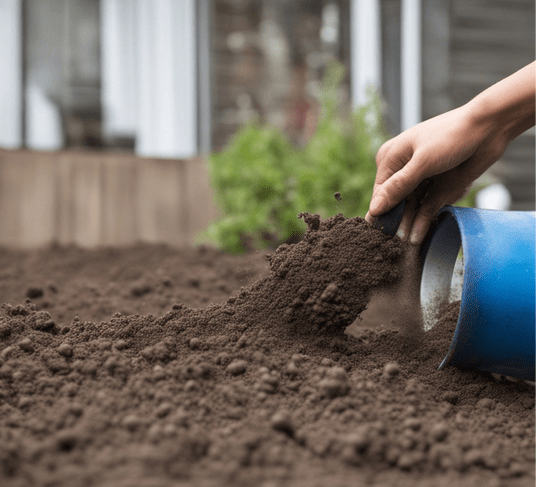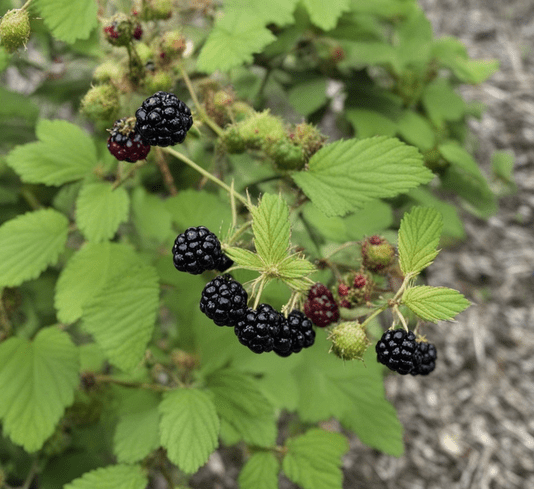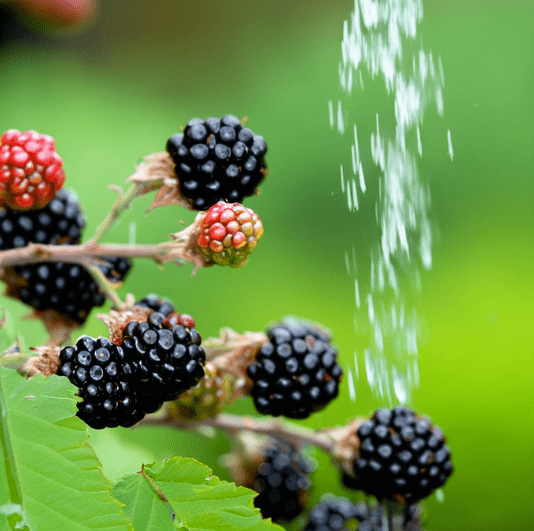Boost your blackberry bushes with a guide on “Enhancing Blackberry Bush Growth.” Discover the ideal times and methods for fertilization to ensure your bushes thrive. This guide simplifies the process, making it easy to enhance the growth of your blackberry bushes. Ready to cultivate a flourishing blackberry patch? Let’s explore the essential steps for enhancing blackberry bush growth together!
Early Spring (Before Growth Begins)
- In late winter to early spring, before new growth starts, apply a balanced, slow-release fertilizer. Look for a formulation with equal or close-to-equal amounts of nitrogen (N), phosphorus (P) and potassium (K), such as a 10-10-10 or 14-14-14 blend.
Late Spring (When Flower Buds Form)
- Once your blackberry bushes begin to produce flower buds, provide them with a nitrogen-rich fertilizer. Nitrogen encourages lush foliage and healthy fruit development.
- Consider using a nitrogen-focused fertilizer with a higher first number in the N-P-K ratio, such as a 20-10-10 blend.
Early Summer (After Blooming)
- After the blackberry bushes have finished blooming and the fruit is beginning to form, apply a balanced fertilizer again. This helps support both fruit development and continued plant growth.
- You can continue using the same balanced fertilizer as in early spring.
Mid-Summer (Optional)
- If you notice any signs of nutrient deficiency, like yellowing leaves or stunted growth, you can apply a foliar spray of liquid fertilizer to address immediate nutrient needs. Ensure it is diluted as per the product instructions.
Late Summer (After Harvest)
- Once you’ve harvested all the ripe berries, provide your blackberry plants with a light application of a balanced fertilizer. This helps replenish the nutrients used during fruit production.
- Avoid heavy fertilization at this stage, as it may promote late-season growth that can be vulnerable to frost damage.
Fall (Dormant Season)
- In late fall or early winter, after the bushes have gone dormant, you can apply a slow-release, low-nitrogen fertilizer. This helps prepare the plants for the following growing season by providing essential nutrients for root development.
- Choose a fertilizer with a lower first number in the N-P-K ratio, such as a 5-10-10 blend, to promote root growth without encouraging excessive foliage growth.
Boosting Blackberry Growth with Homemade Fertilizers
In addition to commercial fertilizers, you can enhance the growth of your blackberry plants with homemade fertilizers made from readily available organic materials. Here are some DIY fertilizers and soil amendments that can promote healthy blackberry bushes:
1. Compost:
Compost is a valuable source of organic matter and nutrients. Work well-rotted compost into the soil around the base of your blackberry plants in early spring before new growth begins. This enriches the soil and provides a slow-release source of nutrients.
2. Manure Tea:
Create a nutrient-rich manure tea by soaking well-aged, composted manure in water. Dilute it to the color of weak tea and use it to water your blackberry bushes during the growing season. Manure tea supplies nitrogen and other essential nutrients.
3. Banana Peels:
Banana peels are rich in potassium, a nutrient vital for fruit development. Dry and crush banana peels, then sprinkle them around the base of your blackberry bushes. The peels will gradually decompose and release potassium into the soil.
4. Epsom Salt:
Epsom salt is a source of magnesium, which is important for plant growth and fruit production. Dissolve a tablespoon of Epsom salt in a gallon of water and use it to water your blackberry plants once a month during the growing season.
5. Fish Emulsion:
Fish emulsion is a natural fertilizer high in nitrogen. Dilute it according to the package instructions and use it as a liquid fertilizer. Apply it around the base of your blackberry bushes when they are actively growing.
6. Wood Ash:
Wood ash is a good source of potassium and also raises soil pH. Sprinkle wood ash sparingly around your blackberry plants to provide potassium. Avoid using it excessively, as it can make the soil too alkaline.
7. Eggshells:
Crushed eggshells are a source of calcium, which helps prevent blossom end rot in blackberries. Scatter crushed eggshells around the base of the plants.
8. Grass Clippings:
Fresh grass clippings can be used as mulch around your blackberry bushes. As they break down, they add nutrients to the soil. Make sure to use grass clippings from untreated lawns.
9. Worm Castings:
If you have a worm bin, the castings (worm poop) are rich in nutrients and beneficial microorganisms. Mix worm castings into the soil or use them as a top dressing.
10. Seaweed:
If you live near the coast, consider collecting seaweed, rinse it to remove excess salt, and use it as a mulch or compost ingredient. Seaweed is rich in trace minerals and can improve soil health.
When using homemade fertilizers, it’s important to monitor your blackberry bushes for signs of nutrient deficiency or excess. Adjust your fertilization practices accordingly to ensure your plants receive the nutrients they need for optimal growth and fruit production.
General Tips
- Always follow the recommended dosage instructions on the fertilizer label.
- Water the plants thoroughly after applying fertilizer to help nutrients reach the root zone.
- Consider conducting a soil test to determine the specific nutrient needs of your blackberry bushes.
Remember that healthy blackberry bushes not only yield more berries but also have improved resistance to diseases and pests. By timing your fertilizer applications correctly throughout the growing season, you can ensure your blackberry plants are well-nourished and productive.



